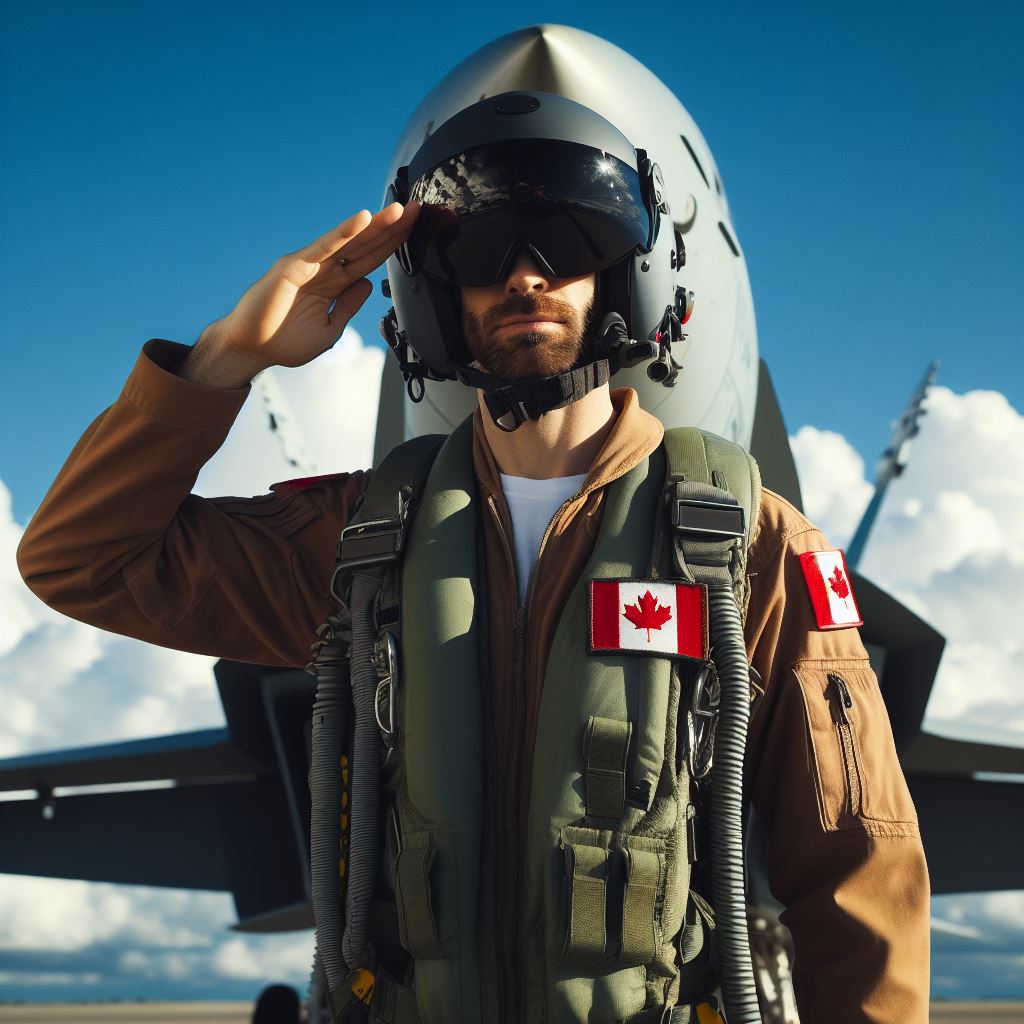Introduction
When it comes to diversity in Canada’s cockpits, it is crucial to acknowledge its significance in aviation.
The representation of different backgrounds, cultures, and perspectives is essential for fostering inclusivity within the industry.
In the dynamic landscape of aviation, the presence of diversity in Canada’s cockpits stands as a testament to the nation’s commitment to inclusivity and equal opportunities.
As the aviation industry undergoes transformative shifts, the recognition and embrace of diverse perspectives, backgrounds, and talents within cockpit crews emerge as crucial components for fostering innovation, enhancing safety, and enriching the overall fabric of Canada’s aviation sector.
In this blog post, we will explore why diversity matters, the impact it can have on aviation, and the steps being taken towards achieving a more diverse cockpit environment.
This exploration delves into the multifaceted dimensions of diversity within the cockpit, shedding light on the progressive strides, challenges, and the enduring impact of a diverse and representative pilot workforce on the Canadian aviation horizon.
By shedding light on this topic, we hope to raise awareness and encourage further discussions on the importance of diversifying Canada’s cockpits.
Current State of Diversity in Canada’s Cockpits
Canada’s aviation industry has made significant strides towards promoting diversity and inclusivity within its cockpits.
However, despite these efforts, there is still a lack of representation for certain groups, including women and racial minorities.
Current Statistics on Representation in Aviation
- In Canada, women represent only a small portion of pilots, accounting for approximately 6% of the total pilot population.
- Among commercial airline pilots, the percentage of women drops even further to around 3%.
- Racial minorities are also underrepresented in the cockpit, with only a limited number holding pilot roles.
Underrepresentation of Women and Racial Minorities
One of the main reasons for the underrepresentation of women and racial minorities in Canada’s cockpits is the lack of encouragement and opportunities for them to pursue careers in aviation.
Historically, this industry has been predominantly male-dominated, which has created barriers for individuals from diverse backgrounds.
Another contributing factor is the cultural perception of certain careers.
Stereotypes that associate pilot roles with masculinity and technical competence can discourage women and minorities from considering aviation as a viable career path.
Potential Consequences of Lack of Diversity
The lack of diversity in Canada’s cockpits can have various consequences, including:
- Limited role models and mentors: The absence of diverse role models in aviation hinders aspiring pilots from underrepresented groups, limiting their ability to envision themselves in such roles.
- Missed talent pool: Neglecting to tap into a diverse talent pool means potentially missing out on qualified and capable individuals who can contribute to the growth and success of the industry.
- Cultural blind spots: Homogenous cockpit environments may result in a limited understanding and sensitivity towards the diverse needs and perspectives of passengers from various backgrounds.
- Impacted innovation and decision-making: Research shows that diverse teams tend to foster innovation and make better decisions due to the inclusion of different viewpoints and experiences. A lack of diversity in the cockpit may hinder such benefits.
Therefore, it is crucial for the aviation industry in Canada to address the underrepresentation of women and racial minorities in its cockpits, aiming for a more inclusive and diverse workforce.
Despite efforts to promote diversity in Canada’s cockpits, there is still a significant underrepresentation of women and racial minorities.
Recognizing the potential consequences of this lack of diversity, the aviation industry must continue to work towards providing equal opportunities and fostering an inclusive environment for all individuals interested in pursuing a career in aviation.
Read: Advancements in Pilot Training
Barriers and Challenges Faced by Diverse Individuals in Aviation
Exploring the Barriers
Limited access to educational resources and training programs
Entering and advancing in aviation careers can be a daunting task for diverse individuals.
Limited access to educational resources and training programs presents a significant barrier.
Many marginalized communities lack the opportunities and funding necessary to pursue aviation education, hindering their entry into the profession.
Prejudices and stereotypes that discourage diverse individuals from pursuing aviation careers
Prejudices and stereotypes also pose challenges.
Society often perceives aviation as an industry dominated by white men, creating a discouraging environment for women, racial minorities, and other marginalized groups.
These biases contribute to the lack of diversity within the industry and discourage potential candidates from pursuing aviation careers.
Lack of representation and mentors from marginalized communities
Additionally, the absence of representation and mentors from marginalized communities further exacerbates the challenges faced by diverse individuals.
Unlock Your Career Potential
Visualize a clear path to success with our tailored Career Consulting service. Personalized insights in just 1-3 days.
Get StartedWithout role models and support systems, it becomes more difficult for these individuals to envision themselves succeeding in aviation and accessing necessary opportunities.
Discrimination and biases in the recruitment and hiring process
Discrimination and biases in the recruitment and hiring process hinder diversity within aviation organizations.
Unconscious biases may influence decision-making, leading to the exclusion of diverse individuals.
Language barriers for individuals whose first language is not English
Additionally, language barriers can be a significant obstacle, especially for individuals whose first language is not English, as aviation predominantly operates in English.
Difficulty obtaining necessary certifications and licenses due to financial constraints
Financial constraints also restrict the advancement of diverse individuals in aviation.
Obtaining necessary certifications and licenses can be costly, creating a barrier for those from less privileged backgrounds.
This financial burden often prevents marginalized groups from pursuing career opportunities and limits their professional growth within the industry.
Inadequate support systems and networking opportunities for diverse individuals
Lack of support systems and networking opportunities further compound the challenges faced by diverse individuals in aviation.
Building connections and accessing mentorship and guidance is essential for career advancement.
However, these opportunities are often limited for marginalized groups, making it harder for them to navigate and thrive in the industry.
Highlighting Specific Challenges
Women face unique challenges in aviation, including gender-based discrimination and unequal pay.
Despite their qualifications and capabilities, women continue to be underrepresented in technical and leadership roles within the industry.
Racial minorities also encounter specific hurdles. Biases and stereotypes can impede their progress in aviation, leading to limited opportunities for career growth and advancement.
Other marginalized groups, such as individuals with disabilities and the LGBTQ+ community, experience similar barriers.
The lack of representation and understanding within aviation organizations makes it challenging for these individuals to break through the glass ceiling and achieve their professional goals.
Recognizing and addressing these barriers and challenges is crucial for creating a more diverse and inclusive aviation industry.
It requires a collective effort from aviation organizations, educational institutions, and society as a whole to break down systemic issues and create equal opportunities for all.
Read: Stress Management for Pilots
Benefits of Diversity in Canada’s Cockpits
Having a diverse cockpit crew in Canada has numerous advantages, especially when it comes to safety and performance.
Various studies and examples have demonstrated the positive impact of diversity on aviation.
In addition, diversity can greatly enhance decision-making processes and problem-solving abilities.
Enhanced Safety
A diverse cockpit crew enhances safety by bringing different perspectives and experiences to the table.
This allows for a more comprehensive assessment of flight situations and potential risks.
For example, a pilot with experience flying in challenging weather conditions may offer valuable input on how to handle adverse weather situations, reducing the likelihood of accidents.
Similarly, a crew member who is familiar with a particular airport or airspace can provide crucial insights to navigate safely.
Moreover, diverse crews are better able to adapt to unexpected situations or emergencies.
Cultural and linguistic diversity among the crew enables effective communication with passengers from different backgrounds, ensuring everyone understands safety procedures and instructions, thereby reducing potential misunderstandings and mishaps.
Improved Performance
Studies have consistently shown that diverse teams outperform homogeneous teams in various industries, including aviation.
In cockpit environments, this translates to better performance and operational efficiency.
Diversity brings a range of skills, expertise, and cognitive abilities to the cockpit, which can lead to innovative approaches in flight operations.
Different perspectives can foster creativity and result in more effective problem-solving.
This can be particularly valuable during critical moments or when facing unconventional situations.
Additionally, a diverse cockpit crew promotes adaptability and flexibility.
Flight crews that encompass individuals from different backgrounds and experiences are more likely to handle changing circumstances and adapt swiftly to new technologies or procedures.
Enhanced Decision-making and Problem-solving
Diversity fosters improved decision-making and problem-solving abilities within the cockpit.
When faced with complex situations, diverse teams can consider a broader range of ideas, resulting in better outcomes.
For instance, during a technical malfunction, a crew consisting of individuals from different engineering or technical backgrounds can collectively brainstorm potential solutions and select the most suitable course of action.
Each team member brings their unique expertise and insights, challenging assumptions and avoiding groupthink.
Furthermore, diversity promotes open communication and constructive conflict resolution.
Crew members feel more comfortable expressing their opinions and concerns, leading to more robust discussions that consider multiple perspectives.
Inspiring the Next Generation
The presence of diverse cockpit crews also plays a crucial role in inspiring the next generation of pilots and aviation professionals.
Seeing individuals from different ethnicities, genders, and backgrounds successfully operating aircraft can encourage aspiring aviators to pursue their dreams regardless of their own backgrounds.
By promoting diversity in crews, the aviation industry sends a powerful message that talent and passion are the driving forces behind success, regardless of one’s demographic characteristics.
The benefits of diversity in Canada’s cockpits are undeniable.
Enhanced safety, improved performance, better decision-making, and inspiring future generations are just a few of the advantages that come with having a diverse cockpit crew.
Embracing diversity in aviation is not only a step towards equality and inclusivity but also a smart move for the industry as a whole.
Read: Pilot Career Progression in Canada

Initiatives and Organizations Promoting Diversity in Aviation
Canada’s aviation industry has recognized the importance of diversity in its cockpits, and numerous initiatives and organizations have been established to promote inclusivity and increase representation.
These efforts have been crucial in creating a more diverse and inclusive industry.
Existing Initiatives and Organizations
- Women in Aviation: This organization aims to promote and support women’s participation in the aviation industry. They provide scholarships, mentorship programs, and networking opportunities for women pilots.
- Indigenous Aviators: This initiative aims to increase the number of Indigenous aviators in Canada. They provide training programs, scholarships, and mentorship opportunities to help Indigenous individuals pursue a career in aviation.
- Black Pilots of Canada: This organization works to promote and support Black pilots in Canada. They aim to increase representation through mentorship, networking, and advocacy.
- Pride in Aviation: This initiative focuses on promoting inclusivity and support for LGBTQ+ individuals in the aviation industry. They organize networking events, provide scholarships, and offer resources for LGBTQ+ pilots.
Programs and Campaigns for Inclusivity
These organizations have developed specific programs and campaigns to promote inclusivity in the cockpit:
- Mentorship Programs: Many of these initiatives offer mentorship programs where experienced pilots mentor individuals from underrepresented groups, providing guidance and support throughout their aviation journey.
- Scholarship Opportunities: Various initiatives provide scholarships to individuals from diverse backgrounds, easing financial burdens and encouraging their participation in aviation training programs.
- Outreach and Education: These programs organize outreach events and educational workshops to introduce aviation careers to individuals who may not have considered them before, particularly targeting marginalized communities.
- Advocacy for Equal Opportunities: These organizations advocate for equal employment opportunities for underrepresented groups in the aviation industry, working with airlines and regulatory bodies to promote diversity and eliminate barriers.
The Role of Initiatives in Promoting Diversity
These initiatives play a crucial role in creating a more diverse and inclusive aviation industry:
- Breaking Stereotypes: By highlighting the successes of individuals from underrepresented groups, these initiatives challenge stereotypes and inspire others to pursue aviation careers.
- Providing Support: Programs and mentorship opportunities offered by these organizations provide valuable support and guidance for individuals facing barriers or challenges in their aviation journey.
- Increasing Representation: Initiatives focused on specific underrepresented groups aim to increase their representation in the cockpit, creating a more diverse workforce that reflects the demographics of Canada.
- Fostering Inclusion: Through their campaigns and advocacy efforts, these organizations foster a culture of inclusion in the aviation industry, ensuring that everyone feels welcome and valued.
In a nutshell, the initiatives and organizations dedicated to promoting diversity in Canada’s aviation industry have made significant progress in creating a more inclusive and representative workforce.
Their programs, campaigns, and advocacy efforts are essential for breaking down barriers and fostering a diverse and welcoming aviation community.
Read: Regional vs. International Pilots
Recommendations for Increasing Diversity in Canada’s Cockpits
Strategies and actions that can be taken to improve diversity in aviation
- Implement diversity and inclusion training programs for aviation organizations and their employees.
- Partner with educational institutions to promote aviation careers to underrepresented groups.
- Create scholarships and financial aid specifically for individuals from diverse backgrounds.
- Establish mentoring programs that pair experienced pilots with aspiring diverse pilots.
- Develop recruitment strategies that target diverse communities, including advertising in culturally specific media outlets.
- Collaborate with community organizations to host aviation workshops and events for diverse individuals.
- Encourage aviation organizations to review and revise their hiring practices to eliminate bias and promote diversity.
The importance of mentorship and support networks for diverse individuals
- Mentorship provides guidance, support, and hands-on experience necessary for diverse individuals to succeed in aviation.
- Supporting diverse individuals through mentorship networks helps them overcome obstacles and excel in their careers.
- Mentors can provide valuable insights and build confidence in diverse individuals by sharing their own experiences.
- Mentorship fosters a sense of belonging and helps diverse individuals navigate the challenges of a predominantly white industry.
- Support networks offer opportunities for diverse individuals to connect, share resources, and access professional development.
The need for industry-wide commitment to diversity and inclusion
- Aviation organizations must prioritize diversity and inclusion to reflect the multicultural nature of Canadian society.
- Senior leaders should champion diversity efforts and ensure they are integrated into corporate strategies and policies.
- Diversity and inclusion metrics should be tracked, evaluated, and publicly reported to hold aviation organizations accountable.
- Industry-wide collaborations can drive collective action and facilitate the sharing of best practices and resources.
- Encouraging employee resource groups and diversity committees can promote a culture of inclusivity and diversity awareness.
- Investing in research to better understand barriers and biases faced by diverse individuals can inform targeted initiatives.
In summary, increasing diversity in Canada’s cockpits requires proactive strategies, mentorship programs, and industry-wide commitment.
By implementing these recommendations, the aviation industry can create a more inclusive and representative workforce, reflecting the diverse society it serves.
Conclusion
This blog section highlighted the importance of diversity in Canada’s cockpits.
We discussed how diversity brings a range of perspectives, skills, and experiences to the aviation industry. It fosters innovation, enhances safety, and promotes equality.
By embracing diversity in the cockpit, Canada’s aviation industry can thrive and adapt to the changing global landscape.
It is crucial to acknowledge the barriers that marginalized groups face in accessing opportunities within the industry.
Creating a more inclusive environment requires active support and initiatives.
We encourage readers to support organizations and initiatives that promote diversity in the aviation industry.
Whether it is advocating for equal representation in pilot training programs or supporting diversity initiatives within aviation companies, every individual can contribute to a more inclusive cockpit.
Together, let’s celebrate and embrace diversity in Canada’s cockpits.
Let’s challenge stereotypes, break down barriers, and ensure that everyone has an opportunity to excel in the aviation industry.
By supporting diversity, we can create a safer, more innovative, and inclusive aviation industry for all.




